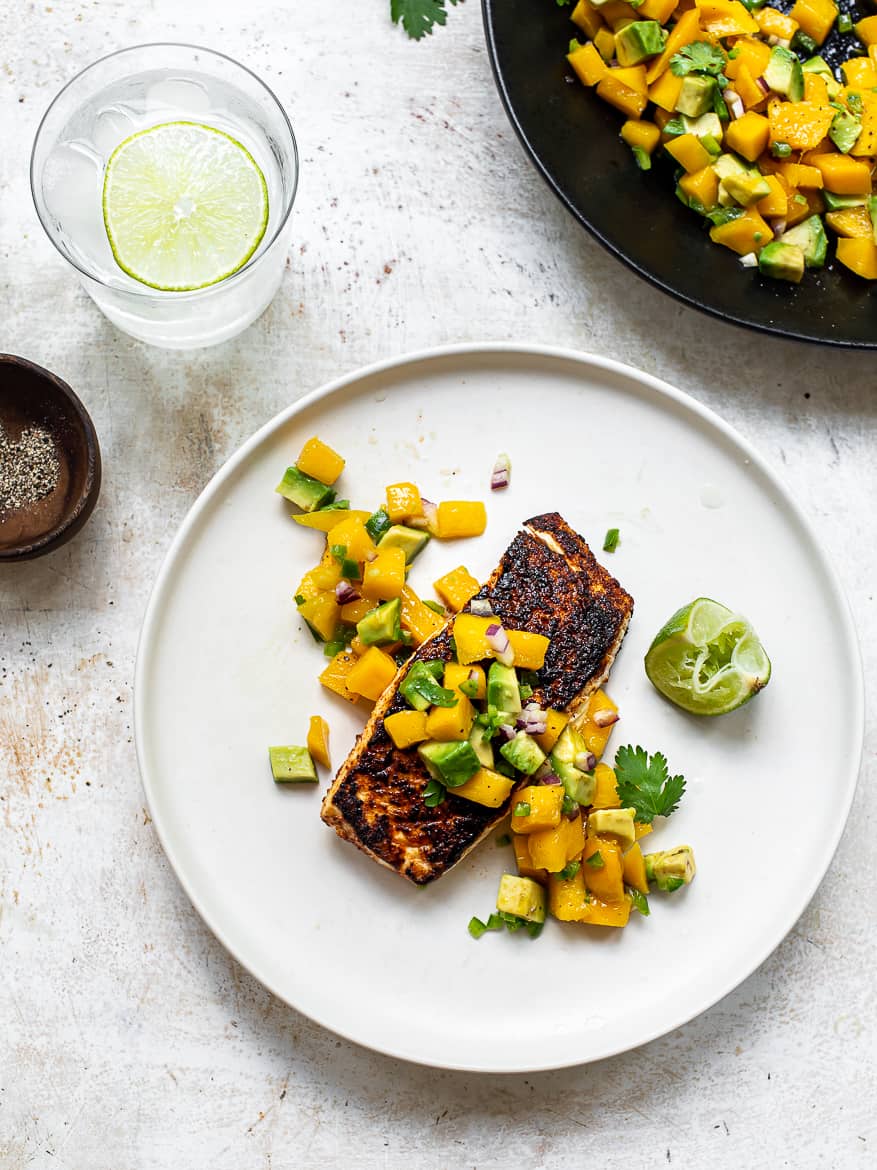
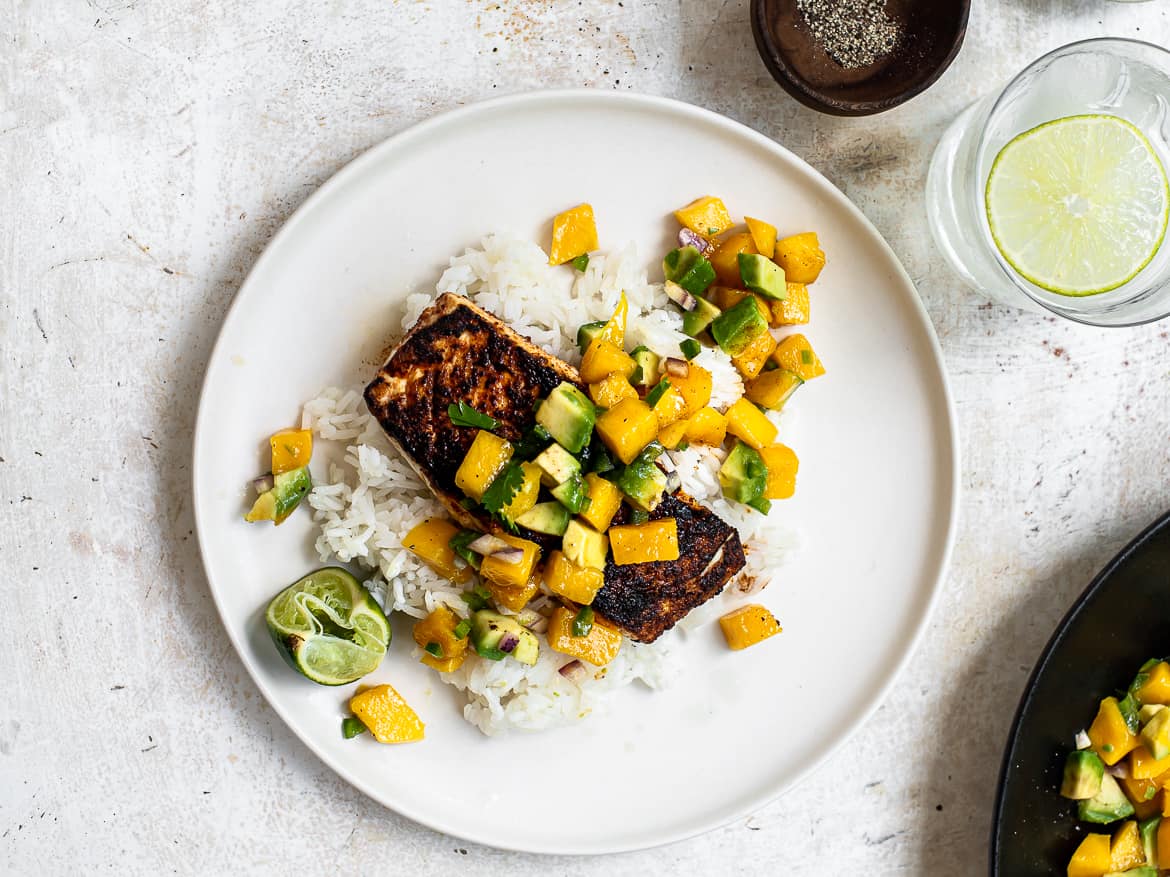
If I had a category here named “Summer Eating” this blackened fish with mango avocado salsa would would be at the top of the list. Light, satisfying, and delicious, it is simply perfect for an alfresco evening meal. I realize there is a lot of gorgeous seasonal produce right now in South Western Ontario which of course does not include mangoes and avocados. But to me, the sweet-gentle taste of a pan-seared halibut, smothered in a blackened spice, is irresistible when paired with a lime-laced mango and avocado salsa. However, you can be sure that as soon as peaches, corn, and tomatoes arrive at the markets in Ontario, that is what will go in my salsa instead.
This is the kind of meal you can pull together in under 30 minutes. The kind of meal you want when it is too hot to cook anything at all but you gotta cook something to go with your glass of rosé. I honestly can’t think of an easier, tastier and more nutritious meal to cook during this heat wave.
What is blackened fish
Blackening is the technique of dredging fish in dried spices then cooking it in a hot cast iron skillet until the spice coating, not the fish, slightly burns and chars on the outside. The Blackening method was invented by Chef Paul Prudhomme in the 1980’s to duplicate the flavours of charcoal grilling in the commercial kitchen of his restaurant. He introduced this dish at his restaurant in New Orleans using redfish fillets rubbed with a cajun-style spice that were then seared in a hot skillet. The dish became so popular it created a cajun-food craze causing redfish to become dangerously overfished.
Blackening spice blend recipes vary, but most seem to include garlic and onion powder, paprika, thyme, oregano, salt, pepper and a pinch of cayenne. I make a blackened salmon where I use almost those exact spices and it is delicious. However, when I am using white fish, I find the dried oregano and thyme a little too strong for the more delicate, and less oily, white flesh.
For this blackened fish recipe, the spice blend I use is the following:
- smoked paprika – adds a fantastic smoky flavour
- paprika
- chili powder
- garlic powder
- cumin
- salt and pepper
- cayenne powder – just a pinch for a barely detected bit of heat
If you’d like, you can buy a pre-mixed blend but it is so simple to throw together I really recommend making your own.
Fresh herbs are not recommended as they will burn and turn bitter too quickly. The blackening method can be applied to other meat proteins and even vegetables, as long as they don’t take too long to cook. Chicken breast, for example, would need to be pounded thin. For vegetables, try zucchini, portobello mushrooms, or eggplant – out of this world delicious.
What is the best fish to use
Any firm fish that isn’t too thick is fantastic for blackening. Salmon is perhaps the most popular since due to its fattiness it stands well to the high heat and does not dry out.
For this recipe, I used halibut. It is a firm-fleshed, mild, almost sweet-tasting fish with no fishy flavour. Unfortunately, it can be pricey so go for a less expensive fish if feeding a crowd. Cod, snapper, sea bass, tuna, and swordfish would also be great. If choosing halibut, try and go for a thinner piece – you don’t want the outside to burn before the inside cooks.
How to cook blackened fish
A cast iron skillet really works best to cook the fish. In the summer, I like to place the skillet on the grill which does a great job at searing the fish quickly with minimal mess. If you don’t have an outdoor grill, you can use the stovetop, just be sure to have the windows open and the fan on high. The fish cooks very quickly so even if it is smoky, it won’t be for long.
If you don’t have a cast iron skillet, use the heaviest bottomed pan you have.
Unless very thick, most fish will only take about 2-3 minutes a side. A gas grill with a lid is ideal because it allows the fish to cook perfectly on the inside while it sears quickly on the outside.
You can certainly grill the fish directly on the grates. Just be sure the grates are super clean and well-oiled so that the fish doesn’t stick or fall apart.
The mango avocado salsa
There is nothing earth-shatteringly new to this mango-avocado salsa. The recipe is included here more as a reminder that blackened fish topped with this vibrantly fresh salsa, is seriously good.
Sweet mango, creamy avocado, crunchy red onions, and zippy jalapeños, make the base of the salsa. To tame the mango’s sweetness, a shower of tangy, zesty lime and a light glug of olive oil goes into the mix. A few cilantro leaves on top, and every mouthful is exploding with vibrant flavour.
Mango’s complex, sweet aroma makes a harmonious match to avocados and it is definitely the dominating flavour here. If you dislike mangoes, try peaches or apricots as soon as they are season.
The salsa pairs really well with all sorts of other things – roasted vegetables, grilled chicken, or serve it alongside good ol’ corn chips.
Tip: Make sure the mango is ripe. It is important to use a very ripe mango for optimal sweetness. Atalufo mangoes are my favourite and you can find them at most large grocery stores.
To serve
The blackened fish with mango avocado salsa makes a nice light meal on its own. For a more filling meal I like to serve it alongside white rice, or boiled baby potatoes.
You can also serve the blackened fish and salsa wrapped in tortillas, taco style. Crazy good.
Here is the step by step:
Make the mango-avocado salsa. Chop the mango, avocado, and finely dice the jalpeño and red onion. Place in a medium bowl and mix in the lime juice and a drizzle of olive. Season with salt and pepper to taste and top with chopped cilantro. I like to dice everything quite small but this isn’t necessary.
Add the dried spices to the fish.Place a cast iron skillet on the grill and turn the grill to very high. Pat fish dry and drizzle with 1 tablespoon oil on both sides. In a small bowl, mix the dried spices. Sprinkle the spice mixture on both sides of the fish and press lightly so the spices stick.
Cook the fish. When the skillet is piping hot, add 1 tablespoon oil. Place the fillets in the skillet and cook for 2 to 3 minutes or until the bottom is almost black but not burned. Carefully flip and cook another 2-3 minutes or until the fillets seemed properly blackened but not overcooked.
Remove fish from pan. Place onto a large platter or individual plates.
Serve. Spoon mango-avocado salsa over top and serve with lime wedges, if desired.
Other fish recipes you might enjoy
Slow Cooked Salmon with Capers, Lemon, and Dill
Salmon Cakes with Lemon Yogurt Sauce
Baked Salmon with Red Chimichurri Sauce
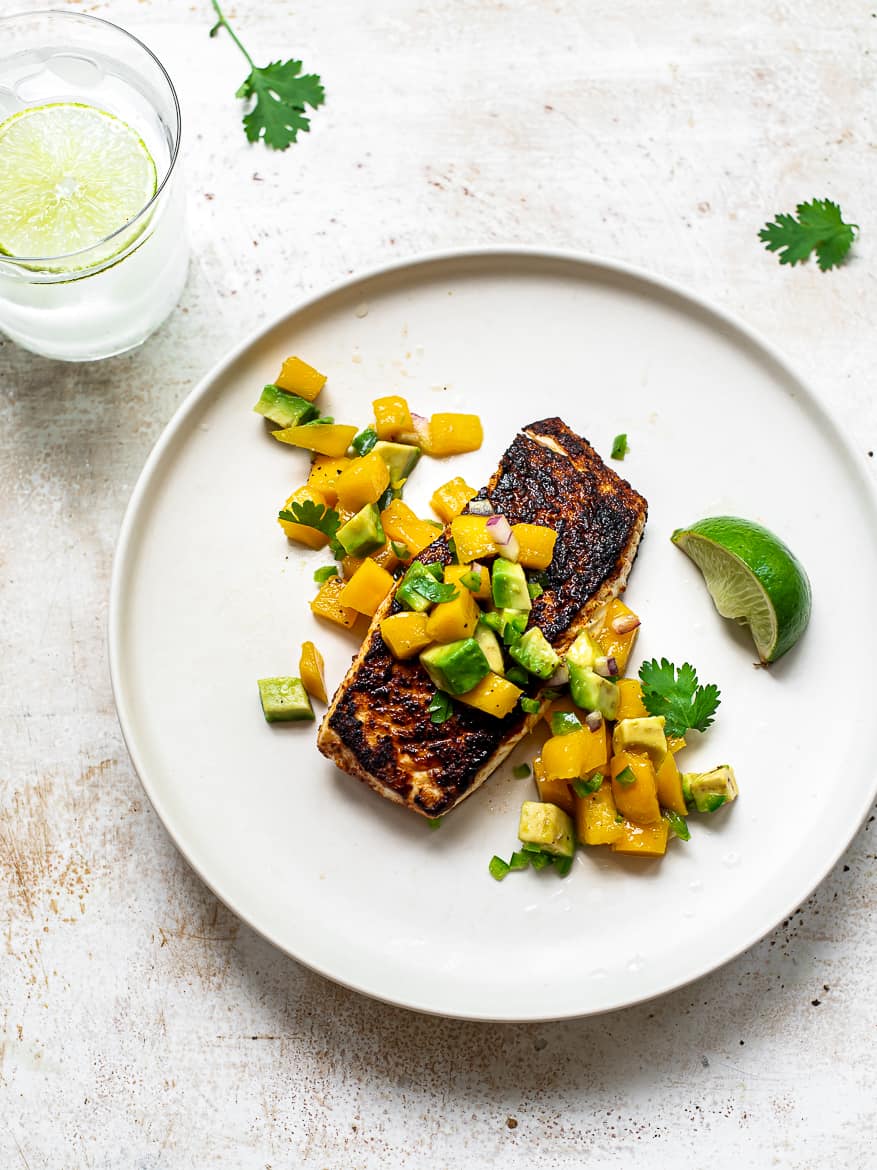
Ingredients
For the Salsa
- 1 ripe large mango, or two small peeled, pitted and diced
- 1 avocado peeled, pitted and diced
- 1/2 medium jalapeno pepper seeded if desired, finely chopped
- 3 tablespoons finely chopped red onion
- 1 large lime juiced
- 1 tablespoon avocado oil, or extra virgin olive oil
- 1/4 teaspoon salt
- freshly cracked black pepper to taste to taste
- 3 tablespoons chopped cilantro
Blackening Spice Mix
- 2 teaspoons smoked paprika
- 2 teaspoons sweet paprika
- 1 teaspoon garlic powder
- 1 teaspoon chili powder
- 1/2 teaspoon cumin powder
- 1 teaspoon kosher salt
- 1 teaspoon freshly ground black pepper
- 1/4 teaspoon cayenne pepper or more to taste
For the Fish
- 2 pieces halibut 6-8 ounce skin removed
- 2 Tablespoons extra virgin olive oil divided
- 1 lime, cut in wedges for serving
Instructions
- Make the salsa. Chop the mango, avocado, and finely dice the jalpeño and red onion. Place the mango, avocado, red onion and jalapeño in a medium bowl. Pour in the lime juice and oil. Season with salt and pepper to taste and top with chopped cilantro. I like to dice everything quite small but this isn't necessary.
- In a small bowl, mix together all the spices. Place a cast iron skillet on the grill and turn the grill to very high. Pat fish dry and drizzle with 1 tablespoon oil on both sides. Sprinkle the spice mixture on both sides of the fish and press lightly so the spices stick.
- When the skillet is piping hot, add the remaining 1 tablespoon oil. Place the fillets in the skillet and cook for 2 to 3 minutes or until the bottom is almost black but not burned. Carefully flip and cook another 2-3 minutes or until the fillets seemed properly blackened but not overcooked.
- Remove fish from pan and place onto a large platter or individual plates. Spoon mango-avocado salsa over top and serve immediately.


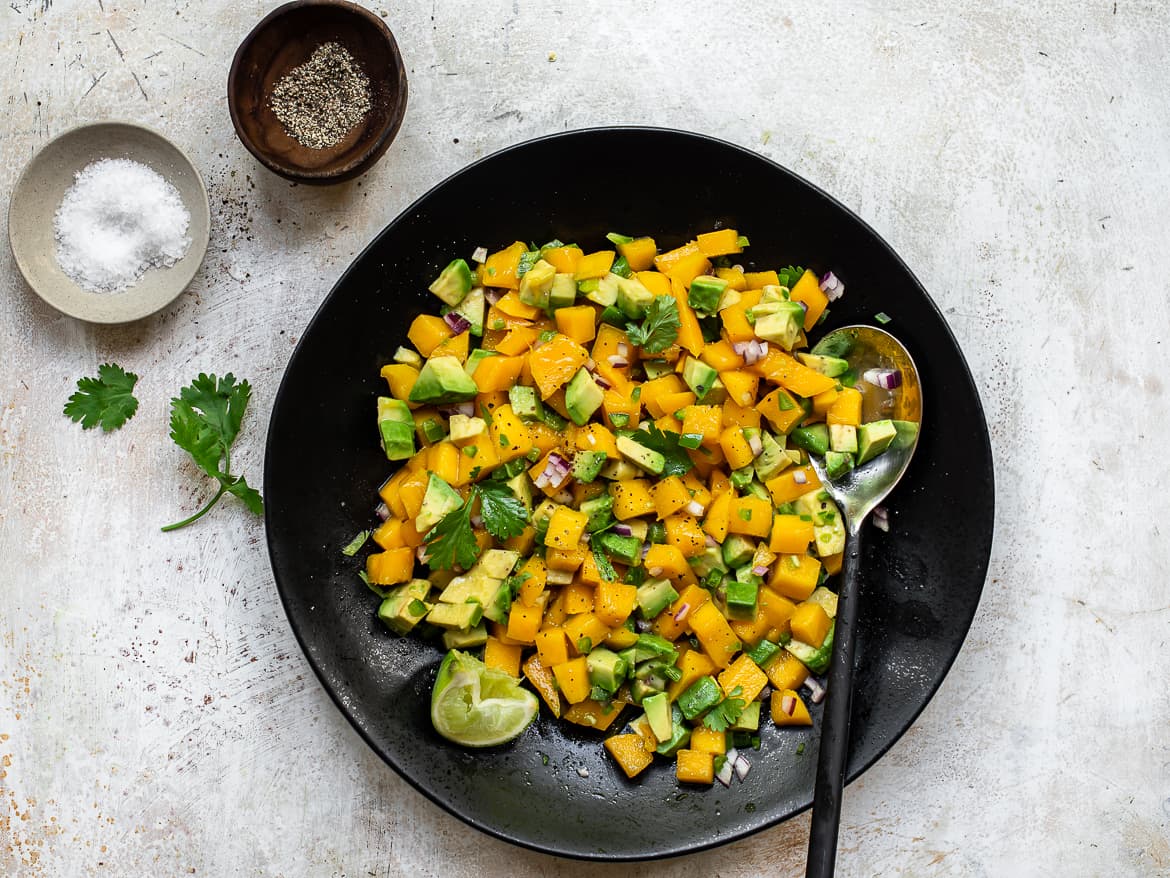
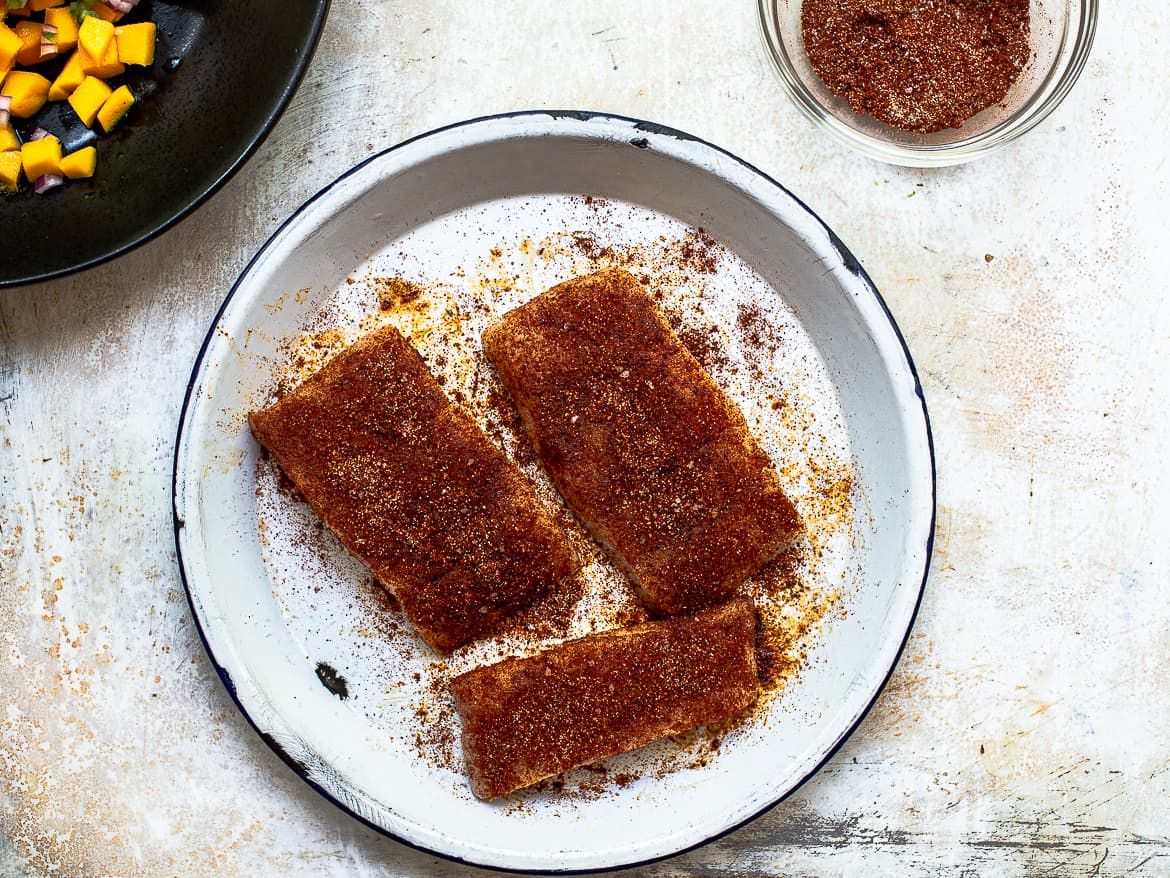
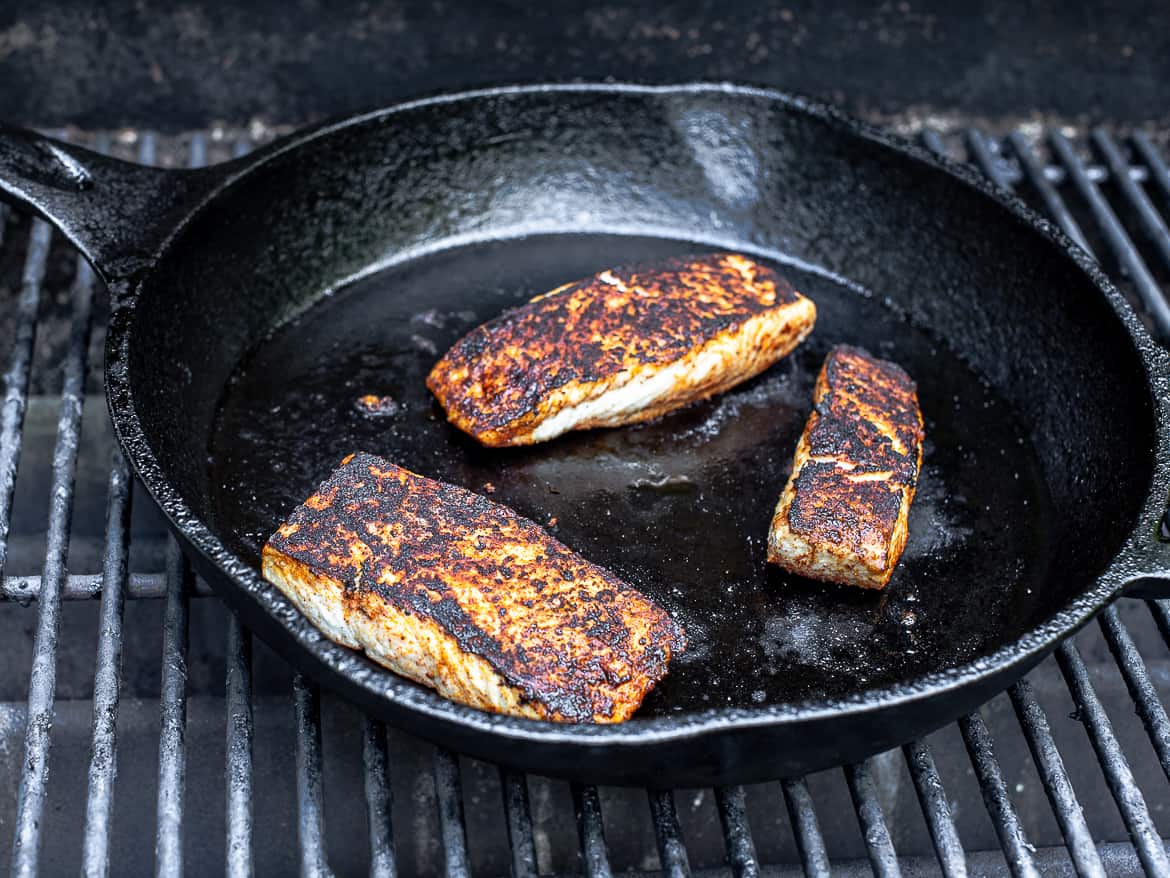
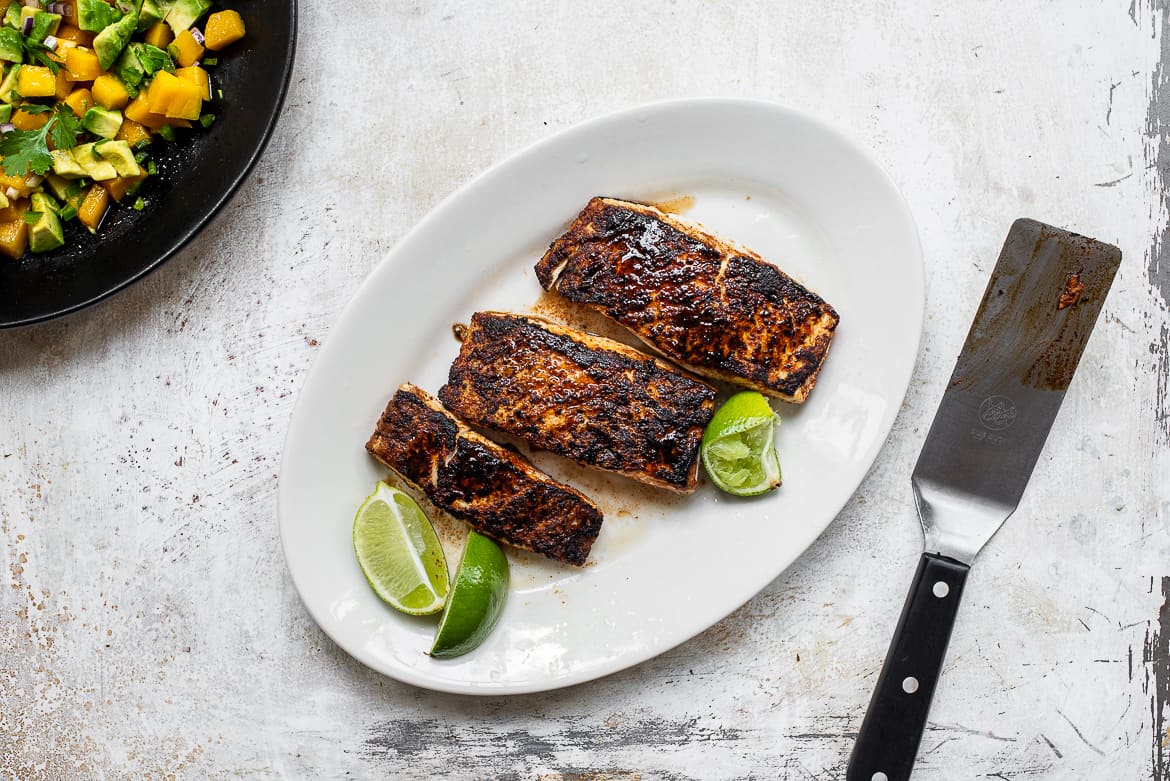
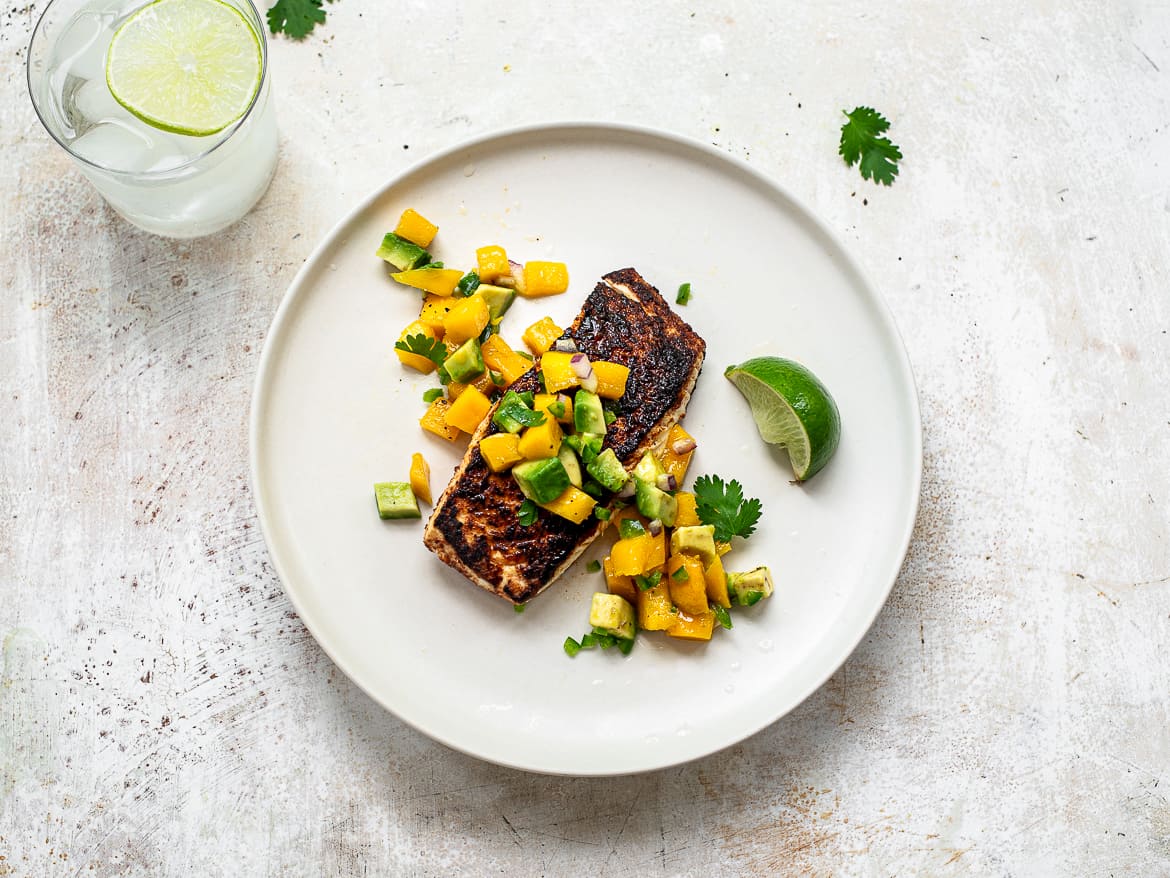
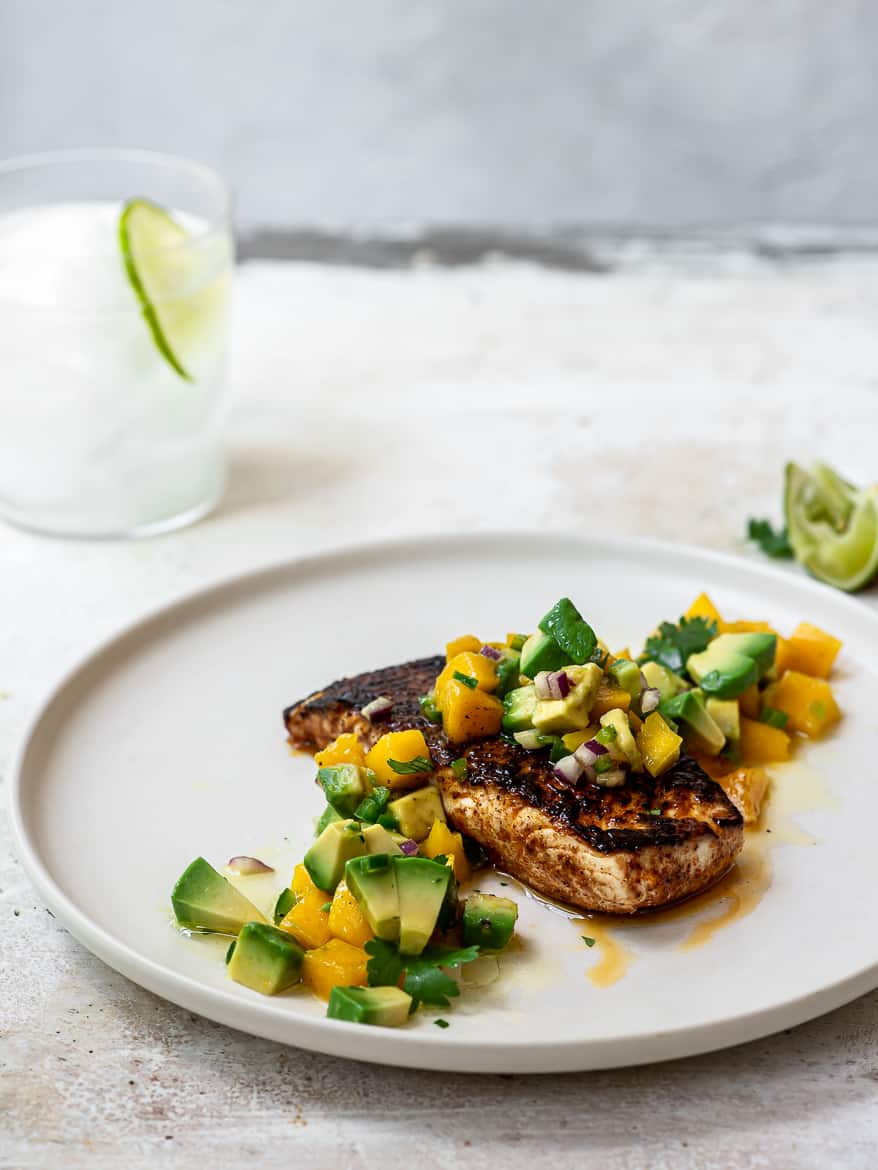
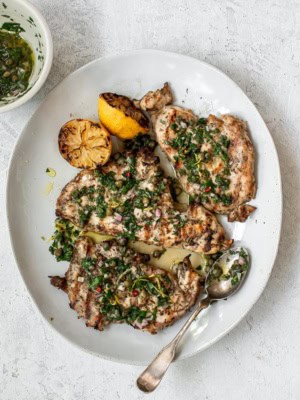
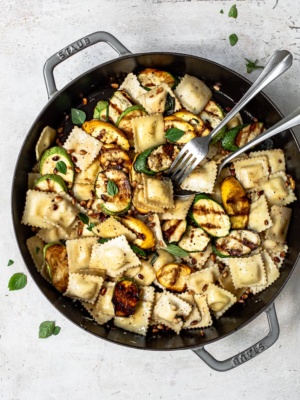

Barry Russell
I just made this and it was a big hit with the family. I’ll be adding it to my repertoire of regular summer dishes.
Sandra Valvassori
So happy to hear this, Barry! It really is a great summer dish. Thank you so much for writing a review, I really appreciate it!